Search Images
Browse Content (p. 926)
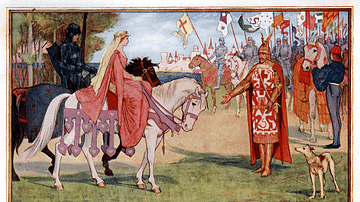
Image
Lancelot Brings Guinevere to Arthur
Illustration from the 1902 CE Book of Romance.
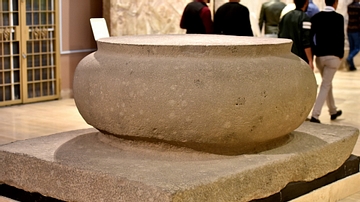
Image
Basalt Column Base from Khorsabad
This is one of a pair of basalt column base (the other is in front of the entrance to the Iraq Museum). It was part of the colonnade supporting the roof of the portico at the entrance to the New Year Festival House (Bit-Hilani) at Khorsabad...
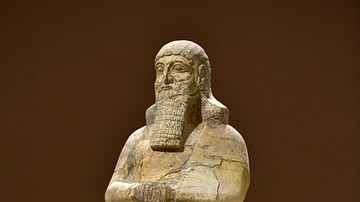
Image
Kurba'il Statue of Shalmaneser III
Kurba'il statue of Shalmaneser III (r. 858-824 BCE), found in Fort Shalmaneser in 1961 by the British School of Archaeology in Iraq. The statue originally stood in the Temple of Adad at the city of Kurba'il, north of modern-day Mosul...
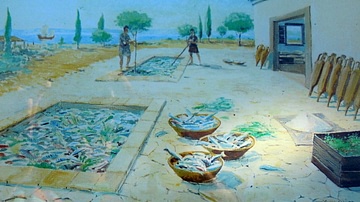
Image
A Garum Factory
A watercolour depiction of the fish salting tanks at a Garum factory at the Roman Ruins of the Villa at Cerro da Vila which was built c. 27 BCE - 14 CE. The villa is located in what is now the resort of Vilamoura in Loule, Portugal.
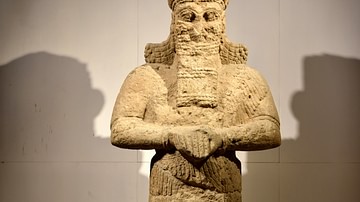
Image
Statue of Nabu from Nimrud
Colossal limestone statue representing Nabu, the Mesopotamian god of wisdom and knowledge. Found near one of the gates of the Nabu Temple in the city of Nimrud (ancient Kalhu), dating to the 8th century BCE.
Iraq Museum, Baghdad.
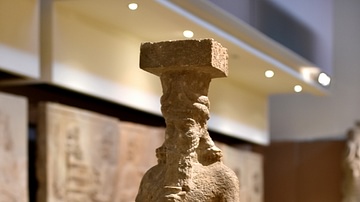
Image
Statue of a Minor Deity from Khorsabad
This statue of a minor deity (probably Ea, god of water and sea) stands and holds a vessel in his hands, from which water flows. It is one of a pair of statues which were found outside the entrance (in front of trees) to the Temple of Sin...
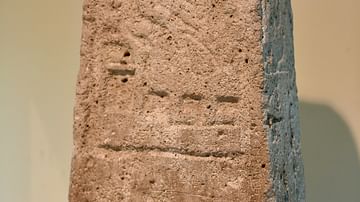
Image
Obelisk of Ur-Nanshe from Lagash
This large white limestone obelisk was found in Lagash, southern Mesopotamia, in modern-day Iraq. All of the 4 aspects of the obelisk were carved, in reliefs, with different scenes. The frontal surface depicts the Sumerian goddess Nisaba...
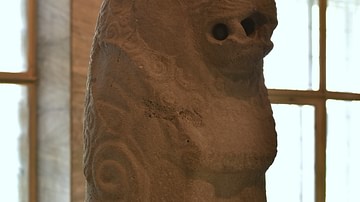
Image
Lion Statue from Eridu
One of a pair of lions which once stood at the gate of the ancient Sumerian city of Eridu (Tell Abu Shahrain) to guard the city's entrance. The lion was carved from black basalt. From Eridu, Southern Mesopotamia, in modern-day Iraq. Mid-3rd...
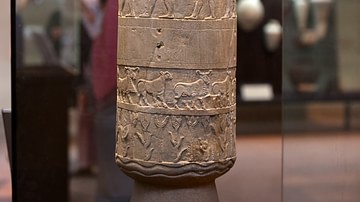
Image
The Warka Vase
The Vase of Warka (also called Uruk Vase) is one of the earliest surviving examples of narrative art. It was excavated (in fragments) by a German excavation team in a temple complex dedicated to the goddess Inanna at the city of Uruk (in...
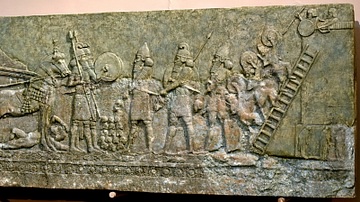
Image
Sargon II Attacks a City
This relief was part of Sargon II's throne, from Throne Hall VII of the Royal Palace of Sargon II at Khorsabad, in modern-day Nineveh Governorate, Iraq. Circa 710 BCE. The Assyrian king, Sargon II, stands in his royal chariot, below a...